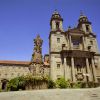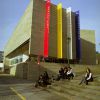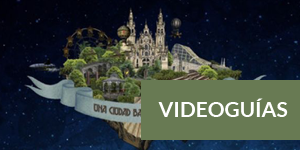- Accede I
- Regístrate I
- carrito
Museo de Tierra Santa
El convento compostelano de San Francisco, conjunto monumental cuya fundación se remonta al año 1214, acoge en uno de sus claustros la exposición permanente del Museo de Tierra Santa. Además de disfrutar del edificio, ejemplo del barroco gallego, la visita supone una oportunidad única de conocer la cultura material y la historia del Próximo Oriente, puesto que se presenta un recorrido por todos los momentos históricos del actual Estado de Israel.
A través de las piezas expuestas, provenientes en su totalidad de Tierra Santa, podemos conocer períodos tan remotos como el Paleolítico y a partir de aquí todo el proceso histórico que ha sufrido la zona hasta la actualidad. Los fondos expuestos nos explican culturas tan lejanas en el tiempo como imprescindibles para entender nuestra propia historia, convirtiéndose así el museo en un puente cultural que enlaza las ciudades de Santiago y Jerusalén, ya unidas históricamente, por ser dos de los principales centros de peregrinación.
La exposición permanente del museo de Tierra Santa se ha articulado en las siguientes secciones: PASADO REMOTO incluye los períodos desde el Paleolítico a la Dominación Romana. PRESENTE DE TIERRA SANTA muestra los trabajos artesanales de la zona, realizados en nácar y madera de olivo, que junto con las maquetas -principalmente la Basílica del Santo Sepulcro- son las piezas más admiradas.
Desde el s. I a. C. hasta la I Guerra Mundial, romanos, bizantinos, árabes y turcos fueron los encargados de configurar la historia de Jerusalén, civilizaciones representadas en la sección JERUSALÉN CODICIADA; y bajo el epígrafe CONVIVENCIA ACTUAL se muestran las variadas religiones y culturas presentes en la actual Jerusalén: judía, musulmana y cristiana. Completan este recorrido maquetas de los edificios históricos y actuales más significativos; junto con una valiosa colección numismática que nos muestra las monedas utilizadas en la zona desde las acuñadas por Alejandro Magno hasta las actuales.












